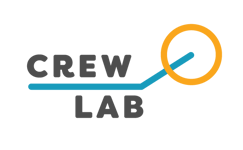Sports clubs thrive when they have a stable base of funding from friends, parents, and alumni. You can’t create world-class experience without investing in it.
Not only that, when the participants of the club get involved in funding the operations, there’s increased buy-in to the team and improved stewardship of the resources. Fundraising is a fundamental yearly practice and skill to develop on your team.
Who?
These campaigns work best when multiple layers of the organization are involved in planning an execution — 20 coaches, athletes, and alumni at a minimum.Your donor pool may be wider than you think, especially for smaller gifts.
Potential Donors
- Alumni of the program (athletes and coaches)
- Parents and relatives of the current athletes on the team
- Local community members that interact with the team, including businesses
When?
Fundraising starts years before the fundraiser. It’s a continuous process of building affinity for your team and its cause. Money follows love and loyalty.
Leaders must maintain consistent contact with their donors to tell stories and connect them with the fruits of their giving. The best ways to do this is to maintain a website, send a regular newsletter, and share frequent, high quality content on social media.
Fundraisers should ensure accurate record-keeping of all donations coming in. Every donation should be acknowledged with a written, verbal, or digital thank you message—every time, no exceptions.
The actual fundraising event should:"Every donation should be acknowledged with a written, verbal, or digital thank you message—every time, no exceptions."
- Be long enough for people to have time to take action and be messaged multiple times
- Short enough so it maintains momentum and energy
- Be partially funded before launching to avoid a cold start
- Timed with a big event globally (like Giving Tuesday) or within the team (like leading up to a championship)
- Include a preparation period before and a completion period after
Where?
There are many channels to reach people these days. It’s best to have a centralized website to direct people to that contains the pitch and the donation links.
And then to get the word out, use a mix of- Email newsletter blasts
- Social media posts with re-shares pre-planned
- Direct emails, phone calls, and texts from athletes, coaches, and alumni
- Influencers in the community to personally reach out to the cohort they know
- Physical mailers, post cards
Make sure that all outreach directs people back to the hub of activity and donation progress. Plan the outreach in advance so that executing it is as close to automatic as possible.
What?
It’s important that you’re clear on the message of why this funding matters and where it is going to make an impact on real people. The fundraiser should have a financial or participation goal.
The fundraising should indicate what different sizes of donations mean to the team. Something like… $5,000 covers hotels for our Championship, and $1,000 pays for a rowing machine to train with.
Types of content- Videos from the captains and coach
- Biographies and stories of how the team has positively changed someone’s life
- Photos and videos of the team practicing and competing
- Retro photos and videos of the legacy of the program
- Annual reports to show what happened and where the money flows
- Sample team budgets
- etc.
An example timeline for a 4-week fundraising event
Before- 6 months before → Plan the date, purpose, and goals for the fundraiser.
- 3 months before → Update and organize the mailing list, plan the outreach
- 2 months before → Build the website, pitch materials, and core message of the campaign
- 1 month before → Produce and schedule most of the actual content that will be shared, and recruit influencers to help you get the word out when it’s time
- 1 week before → Review the plan with the entire team that’s involved and confirm responsibilities; send a teaser message that tells the community that it’s coming
- Week 1 → Announce the fundraiser across all channels with all influencers re-sharing with their networks and show early progress
- Weeks 2-3 → Send at least weekly updates on the progress of the fundraiser mixed with highlights of the good things happening on the team, stories from athletes, etc.
- Week 4 → Send a "last chance to get involved" email blast with lots of gratitude for those who have already given
- Send a wrap-up email to share how the event went and include highlights moments
- Send individual thank yous to the donors sharing the impact of the donation
- Run a retrospective meeting with everyone involved on how to improve on the campaign next time
See it in action: UCLA Men's Rowing, one of the best-funded Rowing Programs in the country.
- Past Projects: Contribute to UCLA Men's Rowing 2024 Season of Giving Today!
- Endowment Campaign: UCLA Men's Rowing Endowment
- UCLA Rowing Annual Report
- Instagram (@uclamensrowing)
- Encourage recurring donations to the team, rather than a one-time gift
- Link people to websites that help them determine if their employer will match their donation
- Keep a live scoreboard or share regular written updates on progress
- Make the link to the website short and memorable, so you can just say it to people
- Plan more, farther ahead than you think is necessary
- Don’t be afraid to pick up the phone
- Shout out big donors
- Find a way to make the donations tax-deductible


